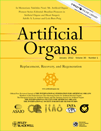Intra-Dialytic Electrostimulation of Leg Extensors May Improve Exercise Tolerance and Quality of Life in Hemodialyzed Patients
Abstract
Hemodialyzed (HD) patients with end-stage renal disease (ESRD) exhibit lower fitness as a consequence of chronic uremic changes that trigger various structural, metabolic, and functional abnormalities in skeletal muscles. The aim of this randomized study was to compare the effect of rehabilitation (RHB) training on a bicycle ergometer and electromyostimulation (EMS) of leg extensors in HD patients with ESRD. Thirty-two HD patients (18 men/14 women; mean age 61.1 ± 8.8 years) were randomized into three groups: (i) exercise training (ET; n = 11) on bicycle ergometer 2 × 20 min; (ii) EMS (n = 11) where stimulation (10 Hz) of leg extensors was applied for 60 min; and (iii) controls (CON; n = 10) without exercise. Exercising was performed between the 2nd and the 3rd hour of HD, three times a week, 20 weeks in total. Ergometric test was performed in order to evaluate peak workload (Wpeak), 6-min corridor walking test (CWT) to evaluate the distance walked, and dynamometry of leg extensors to assess muscle power (Fmax). Urea clearance was monitored and expressed as standard parameters: spKt/V, spKt/V equilibrated (spKt/V-e), and the urea removal ratio (URR). Quality of life (QoL) was assessed by the questionnaire SF-36. A significant increase of Fmax (P = 0.040 in group ET; P = 0.032 in group EMS), of 6-min CWT (P < 0.001 in ET group; P = 0.042 in EMS group), and of Wpeak (P = 0.041 in ET group) was observed. In both exercising groups, significant increase of spKt/V, spKt/V-e, and URR was found as compared with initial values (P < 0.05). In both exercising groups, highly significant changes in summarized mental functions were found (P = 0.001); in summarized physical components, significant improvement was observed in the ET group (P = 0.006). Intradialytic RHB showed comparable positive effects on functional parameters, urea clearance, and QoL. Intradialytic EMS might represent wide therapeutic possibility in the near future.




